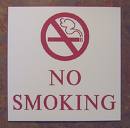
<the study published in <a href="American College of Chest Physicians (ACCP)’s journal CHEST, reveals that African American children with asthma, who are exposed to ETS, have significantly higher toxin levels when compared to their Caucasian counterparts.
Black children have more tobacco-related disorders like asthma, sudden infant death syndrome and low birth weight. To find out the reason, Dr. Stephen Wilson and colleagues from the Cincinnati Children’s Medical Center examined a bi-racial, community-based sample of 220 tobacco-exposed children with asthma (55% African American) in the age group of 5 to 12.
All of the children examined in the US research had the symptoms of persistent asthma and were exposed to at least five cigarettes per day. They were tested for cotinine, a nicotine metabolite, three times over the course of one year, using serum and hair samples.
The level of smoke in the home of each participant was also regularly measured to avoid reporting parental bias. Each study participant had a nicotine dosimeter placed in home which was used to measure each child’s level of ETS exposure.
No racial differences were reported in levels of ETS exposure outside of the home or in air nicotine levels. But, results indicated that while African-American children spent less time exposed to ETS, they showed significantly higher levels of cotinine compared to Caucasian children.
On average, serum cotinine levels in the African-American participants were 32% higher than in the Caucasian participants, and hair cotinine levels were 4 times that of the Caucasian participants.

Tobacco smoke contains over 4000 chemicals in the form of particles and gases.
The particulate phase includes tar, nicotine, benzene and benzo(a)pyrene. The gas phase includes carbon monoxide, ammonia, dimethylnitrosamine, formaldehyde, hydrogen cyanide and acrolein.
It has been estimated that tobacco smoke contains as many as 60 substances which cause or suspected to cause cancer.
Thus, it is important to eliminate environmental tobacco smoke.

But banning smoking in public places has been a highly controversial issue. A common argument opposing government prohibitions on public smoking is that they violate the rights of individuals and property owners.
Thus proper steps should be taken by the government to do more studies on bad effects of passive smoking. Apart from forming government policies to ban smoking, government should take steps to create awareness on this issue. Only then, we would be able to combat this crucial issue.
Via: ‘Race role’ in tobacco smoke risk
Image courtsey: Naagtag, Inside the Human Body, Bedfont



